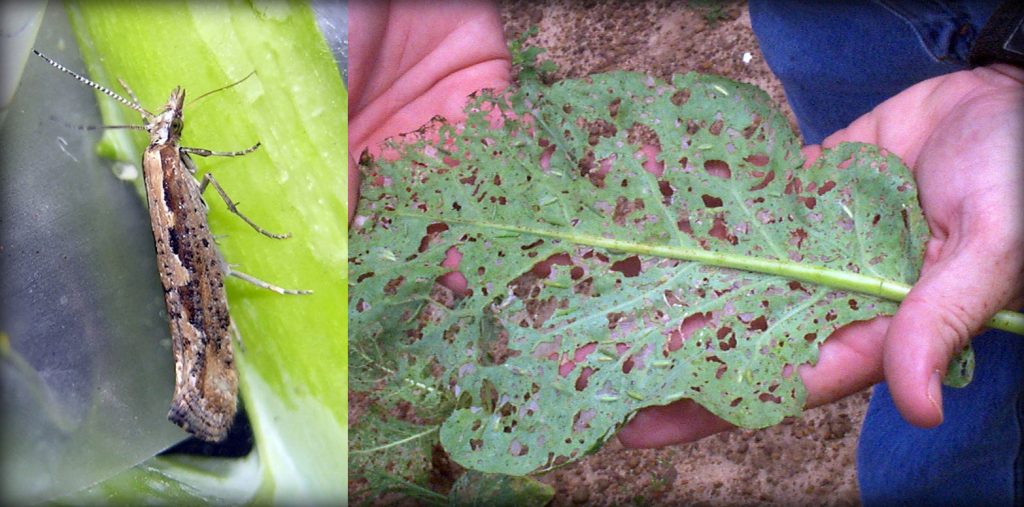
Diamondback moths are starting to show up in some vegetable fields across Georgia, says Stormy Sparks, University of Georgia Cooperative Extension vegetable entomologist. Cole crops producers need to be wary of this pest, as it can pose a threat to cabbage, collards, kale and broccoli.
“Diamondback moth is starting to show up in some areas. We’ve had three or four really bad fields, and they’re really hard to control,” Sparks said. “It’s been scattered. It’s not just one area right now, either.”
Generations Per Year
According to UGA Extension, there are multiple generations per year in Georgia. Generation time will slow considerably in the winter months. However, greater moth activity has been observed when temperatures are higher than normal in December and January. That could be the case this winter with an extended La Nina weather pattern expected.
“That’s a strange pest. It has the potential to explode or disappear anytime of the year,” Sparks said. “They can be a problem in the middle of the summer and in the middle of the winter or they can just disappear.”
Insecticide Effectiveness
Sparks said they have looked at insecticide products like Proclaim and Radiant. He characterized their success as good to fair. Nothing looks great because this is a hard pest to kill.
“They are the world champion of insecticide resistance,” Sparks said.
He added that with the Group 28 insectides, resistance looks pretty severe.
According to UGA Extension, larvae will feed on foliage. Early instars can cause small channels in the leaf surface. Larger larvae can cause perforations in the leaf. Populations above 0.3 larvae per plant need to be controlled. Sparks recommends growers scout weekly to determine if that threshold level has been reached.









